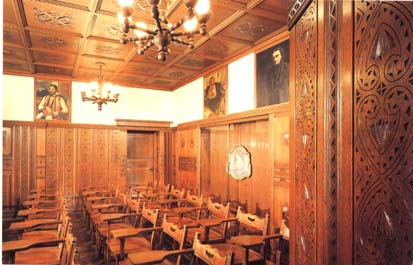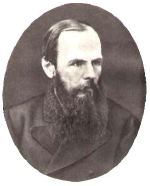 The
Yugoslav Classroom
The
Yugoslav Classroom

 The
Yugoslav Classroom
The
Yugoslav Classroom


Traditional crafts of handcarved wood, lace work, and weaving provide the setting for portraits of six cultural leaders who symbolize the rich heritage of Yugoslvaia.
Slavonian oak bearing Croatian, Serbian, Slavonic, and Slovenian folk motifs incised by "notch" carving, traditionally done with a pen-knife, enriches this room. These trees must force their way through dense volcanic soil, which slows their growth and produces a finely grained wood, ideal for carving. Each spindle of the professor's and guests' chairs bears different notched design.
Carved chandeliers are similar to those in the Palace at Belgrade. A wall panel is incised with the coat of arms of the Universities of Belgrade, Ljubljana, and Zagreb. It is in the form of a double-headed eagle, symbolizing the Eastern empire of Byzantium and the Western Empire of Rome that influenced the nation's religious life.
Men from Serbia, Croatia, Slovenia, and Montenegro, who have made monumental contributions to the literary, religious, artistic, and scientific heritage of Yugoslavia, are shown in six wall portraits. Two women worked six months to complete the lace portrayal of the Madonna of Brezje, framed in silver, a gift to the room from Slovenia. In the bay, the poignant bronze figure, Postwar Motherhood, by Vojta Brania, depicts a barefoot mother nursing her child in war's aftermath.

Our destiny is universality, attained not by the sword, but by the force of brotherhood and of our brotherly striving toward the reunification of mankind.
Dostoevsky
Speech on Pushkin, 1880